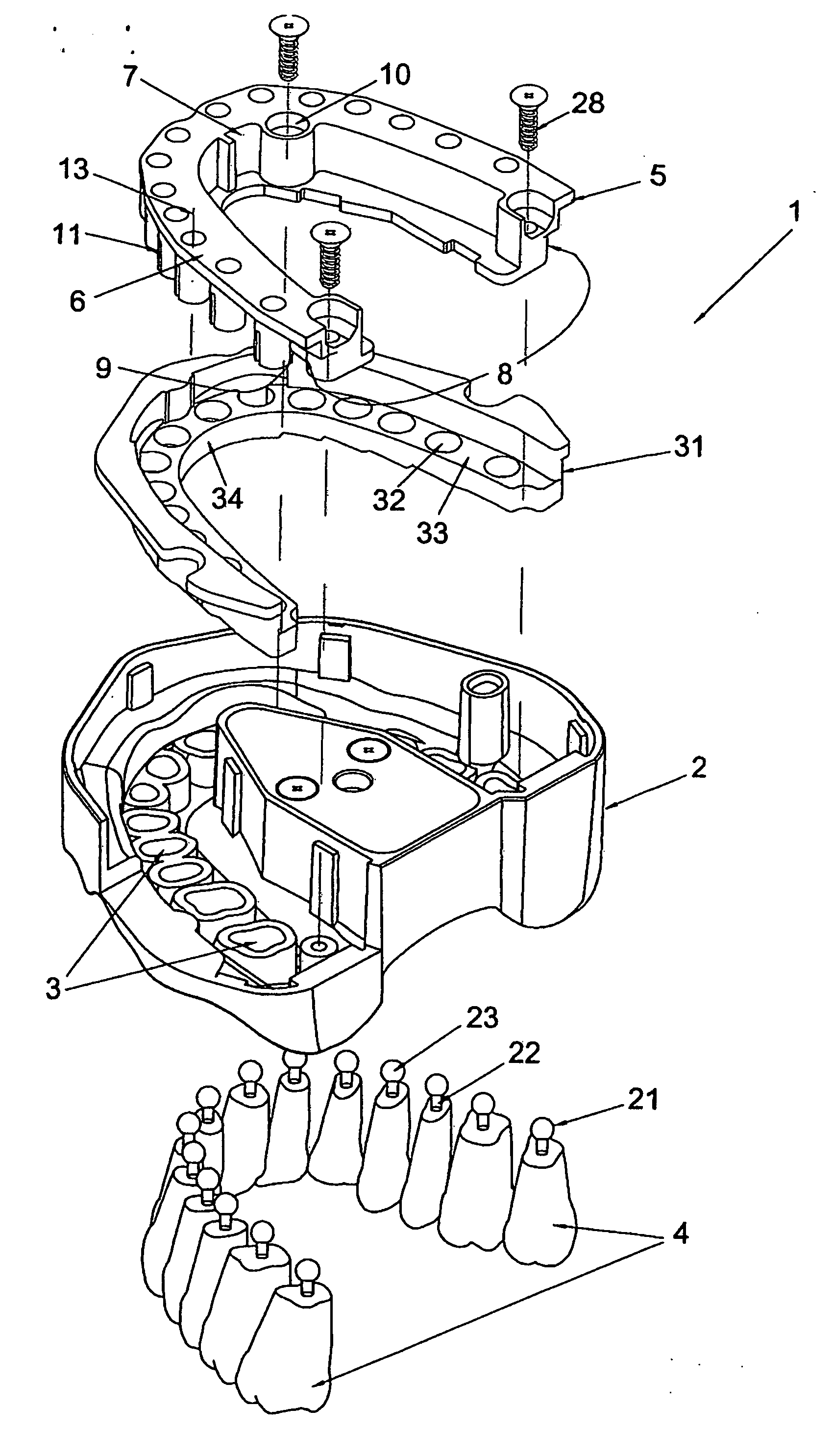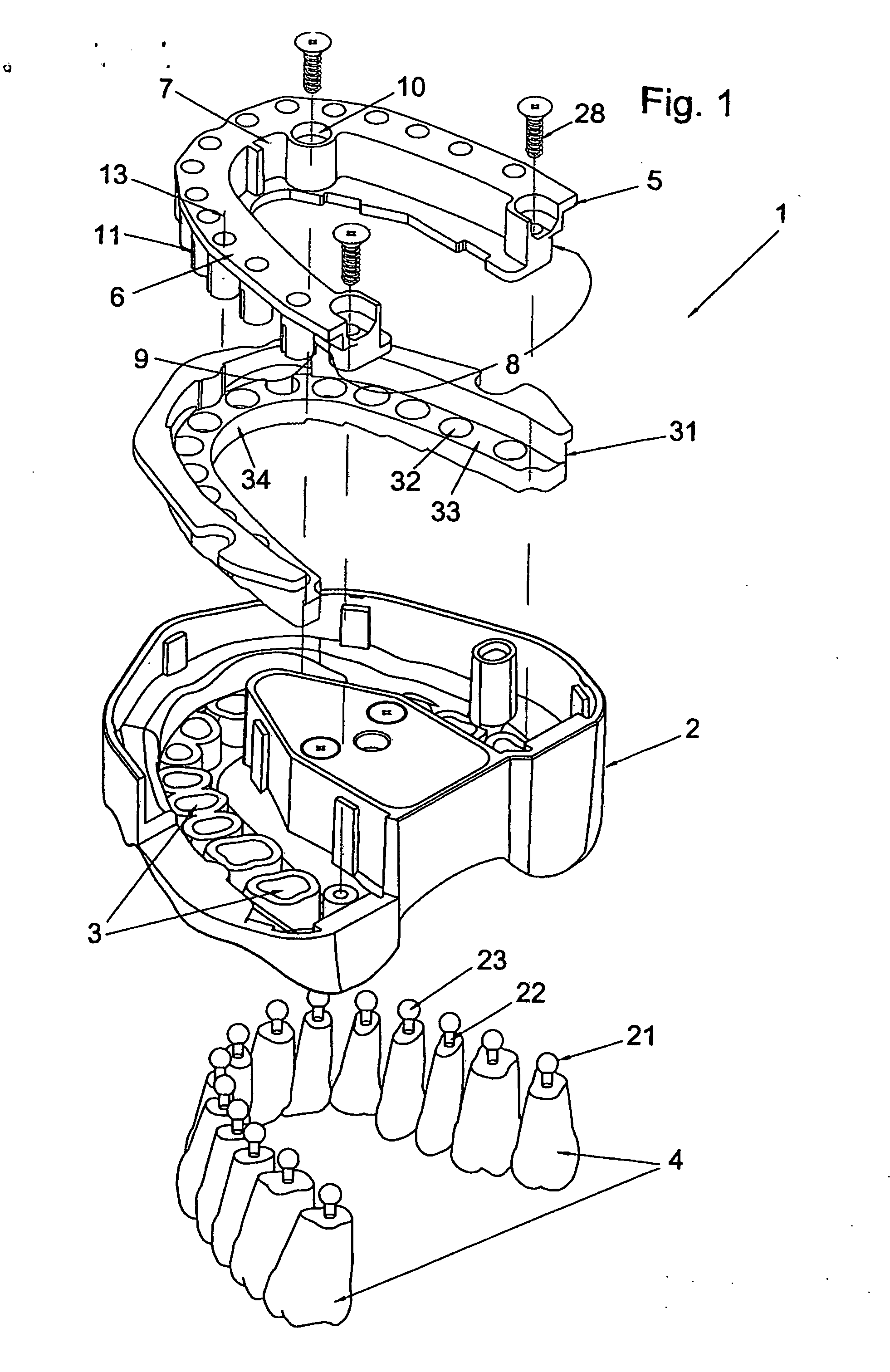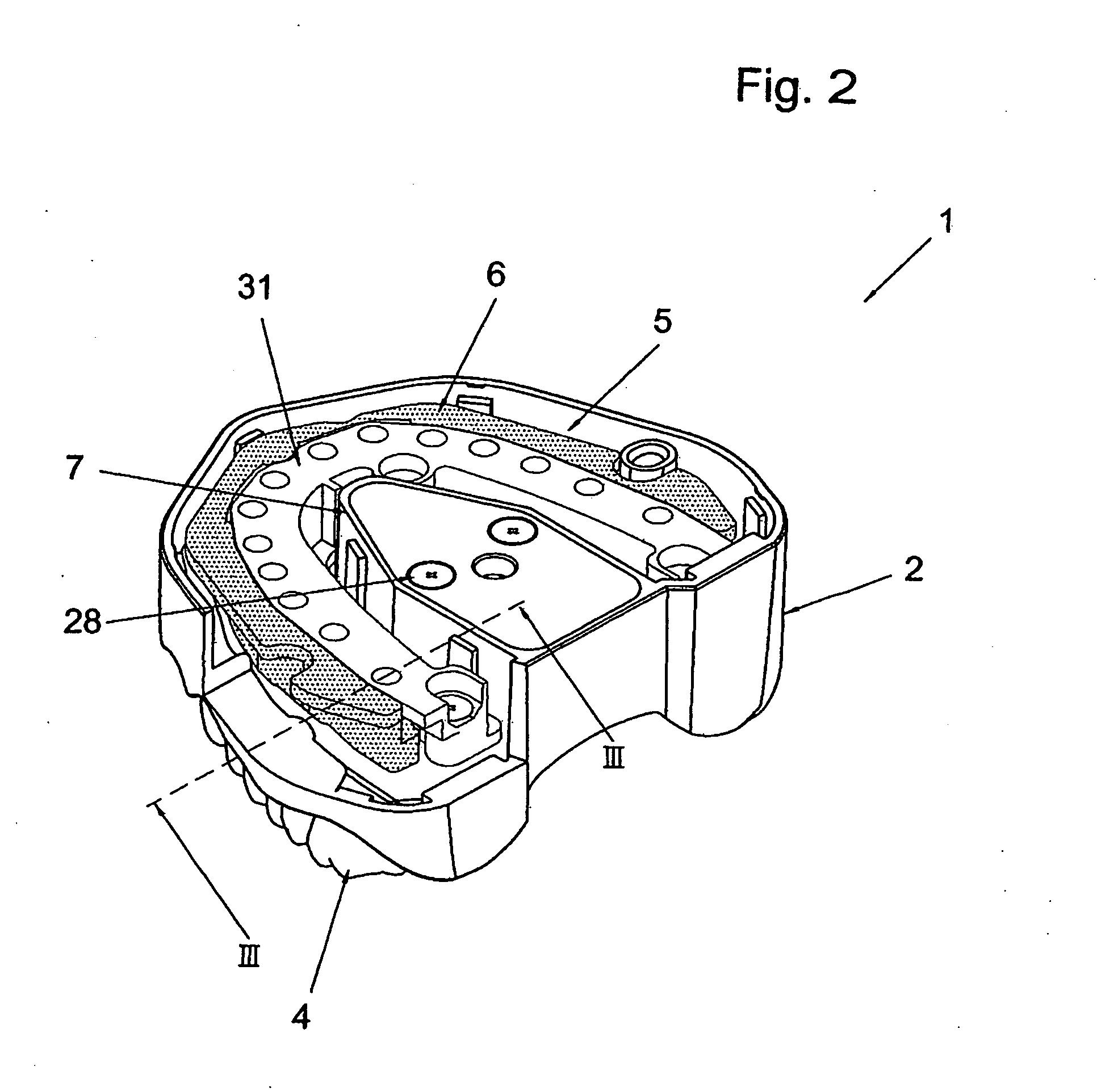Practice model
a technology of learning dentistry and learning teeth, applied in the field of practice models, can solve the problems of inability to secure individual teaching teeth into the carrier plate, inaccessible or only accessible underside of the shell and the carrier plate, and state of the art have not been proven effective in practice, etc., to achieve fast and easy exchange, reliable and durable hold
- Summary
- Abstract
- Description
- Claims
- Application Information
AI Technical Summary
Benefits of technology
Problems solved by technology
Method used
Image
Examples
Embodiment Construction
[0018]FIGS. 1 and 2 show a practice model 1 which can be used by dental students in order to learn dentistry skills. However, the practice model can also be copied on an animal jaw in order to allow veterinarians to undertake similar veterinary exercises.
[0019]The practice model 1 comprises a shell 2 with a plurality of through-holes 3 worked into it. The inner contours of the through-holes 3 are adapted to the outer contours of teaching teeth 4, because the teaching teeth 4 are each inserted into the corresponding through-hole 3 when mounted, and should be supported in the sideways direction by the side wall of the through-hole 3.
[0020]In order to secure the teaching teeth 4 in the through-hole 3, a carrier plate 5 is provided which is arranged on the opposite side of the shell 2 in relation to the position of the teaching teeth 4.
[0021]The carrier plate 5 consists of a base 6 and a horseshoe or U-shaped arch 7 which is firmly connected to the base 6. The shell 2 is produced in suc...
PUM
 Login to View More
Login to View More Abstract
Description
Claims
Application Information
 Login to View More
Login to View More - R&D
- Intellectual Property
- Life Sciences
- Materials
- Tech Scout
- Unparalleled Data Quality
- Higher Quality Content
- 60% Fewer Hallucinations
Browse by: Latest US Patents, China's latest patents, Technical Efficacy Thesaurus, Application Domain, Technology Topic, Popular Technical Reports.
© 2025 PatSnap. All rights reserved.Legal|Privacy policy|Modern Slavery Act Transparency Statement|Sitemap|About US| Contact US: help@patsnap.com



